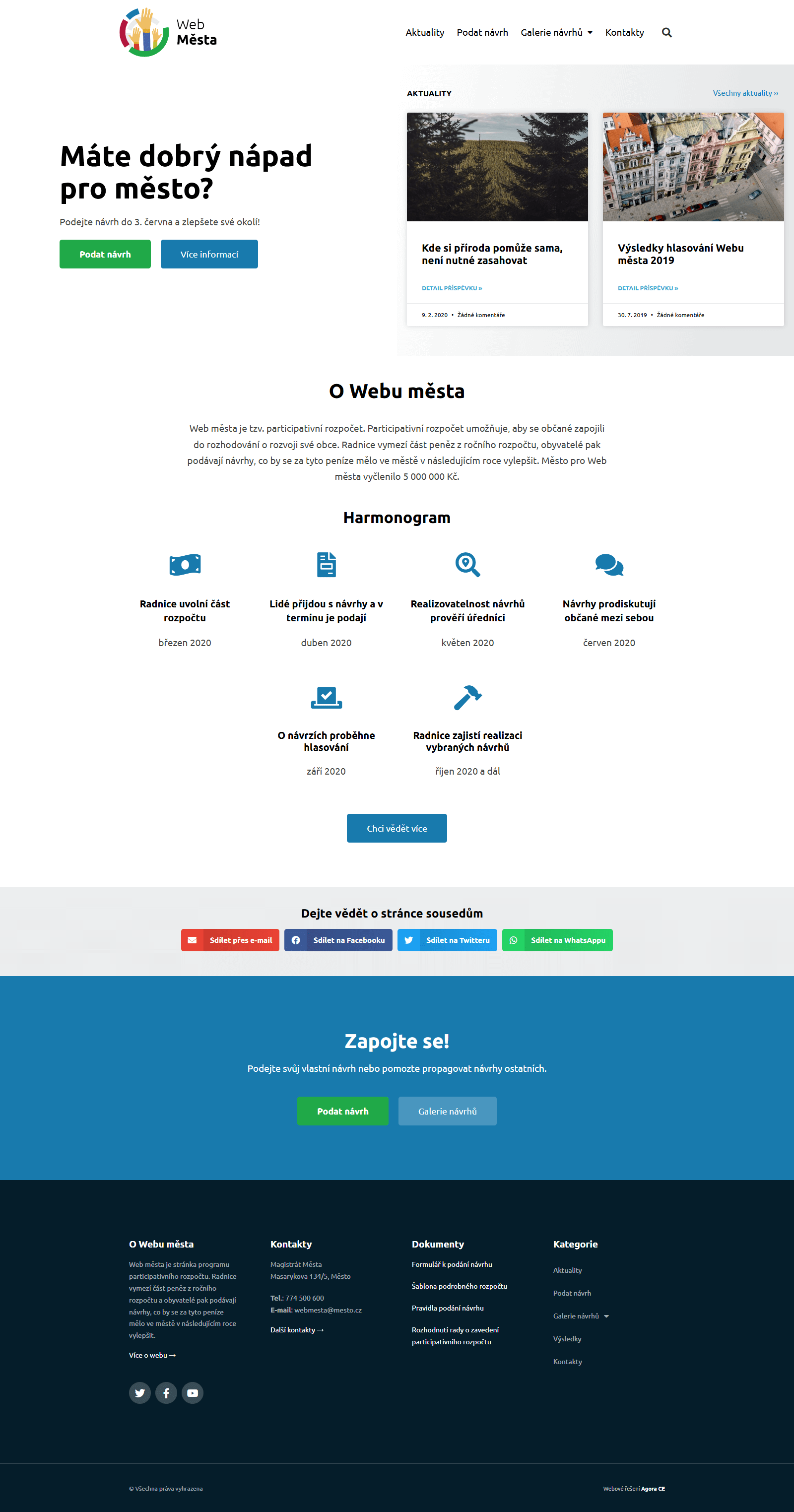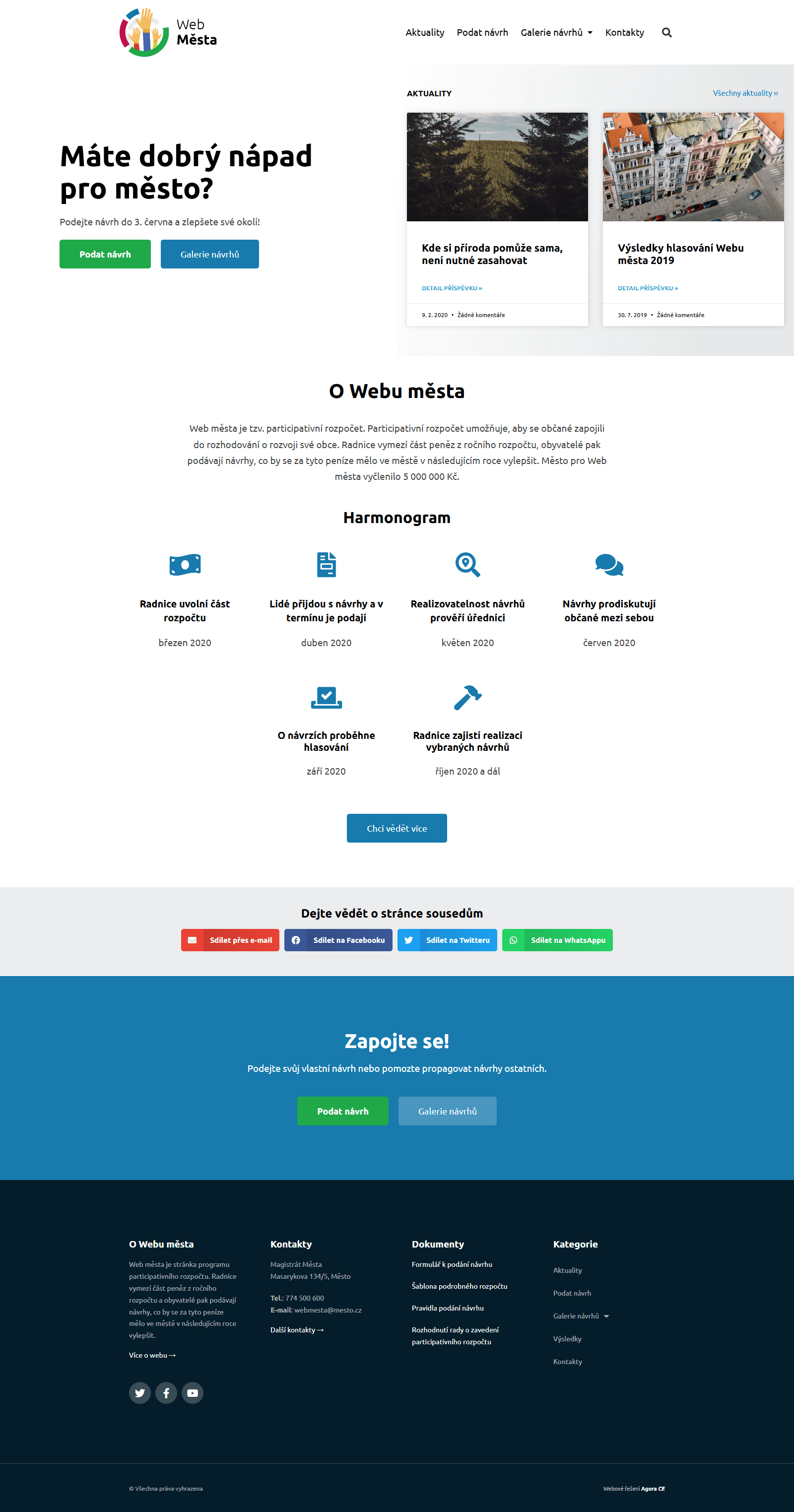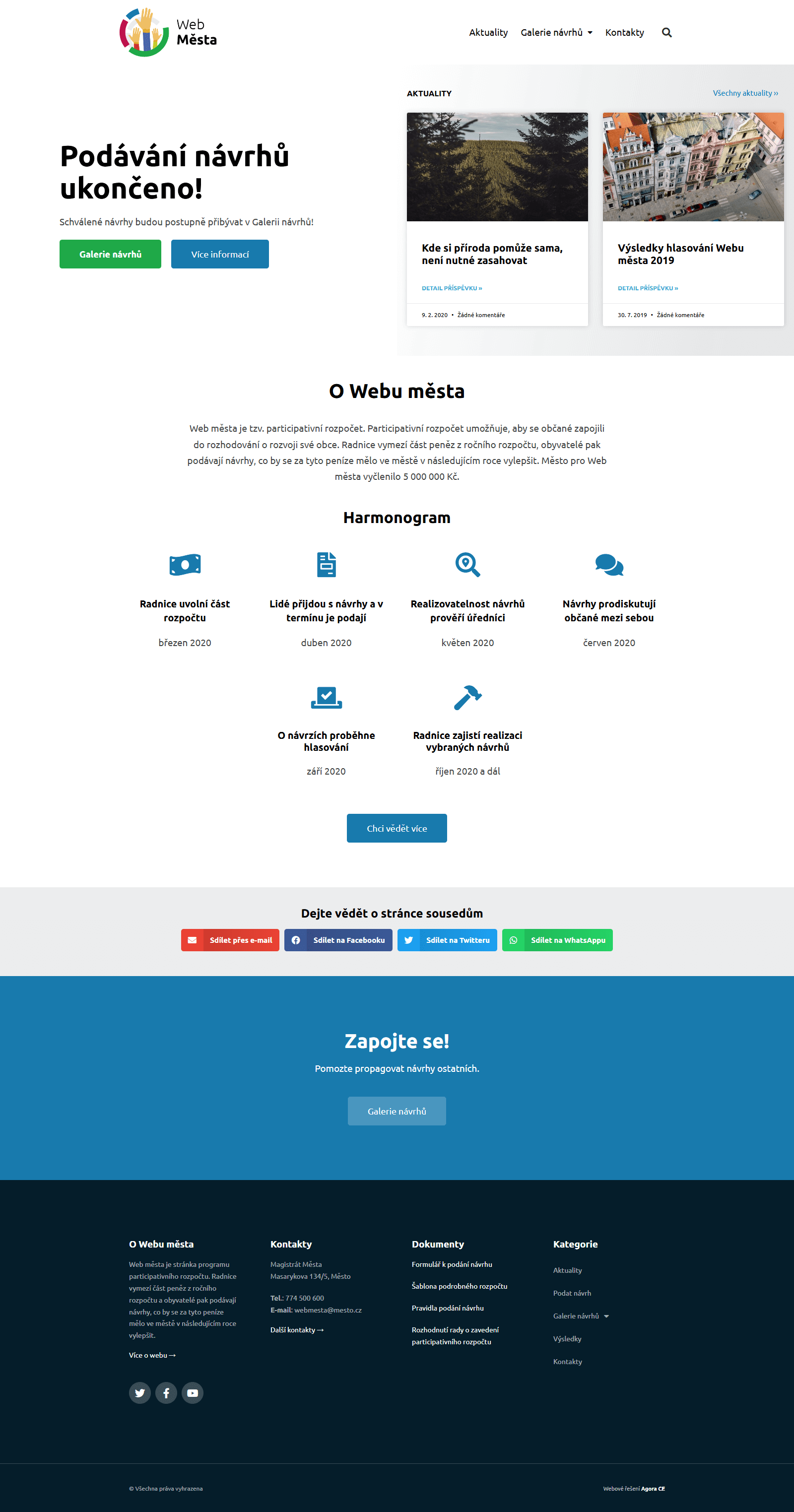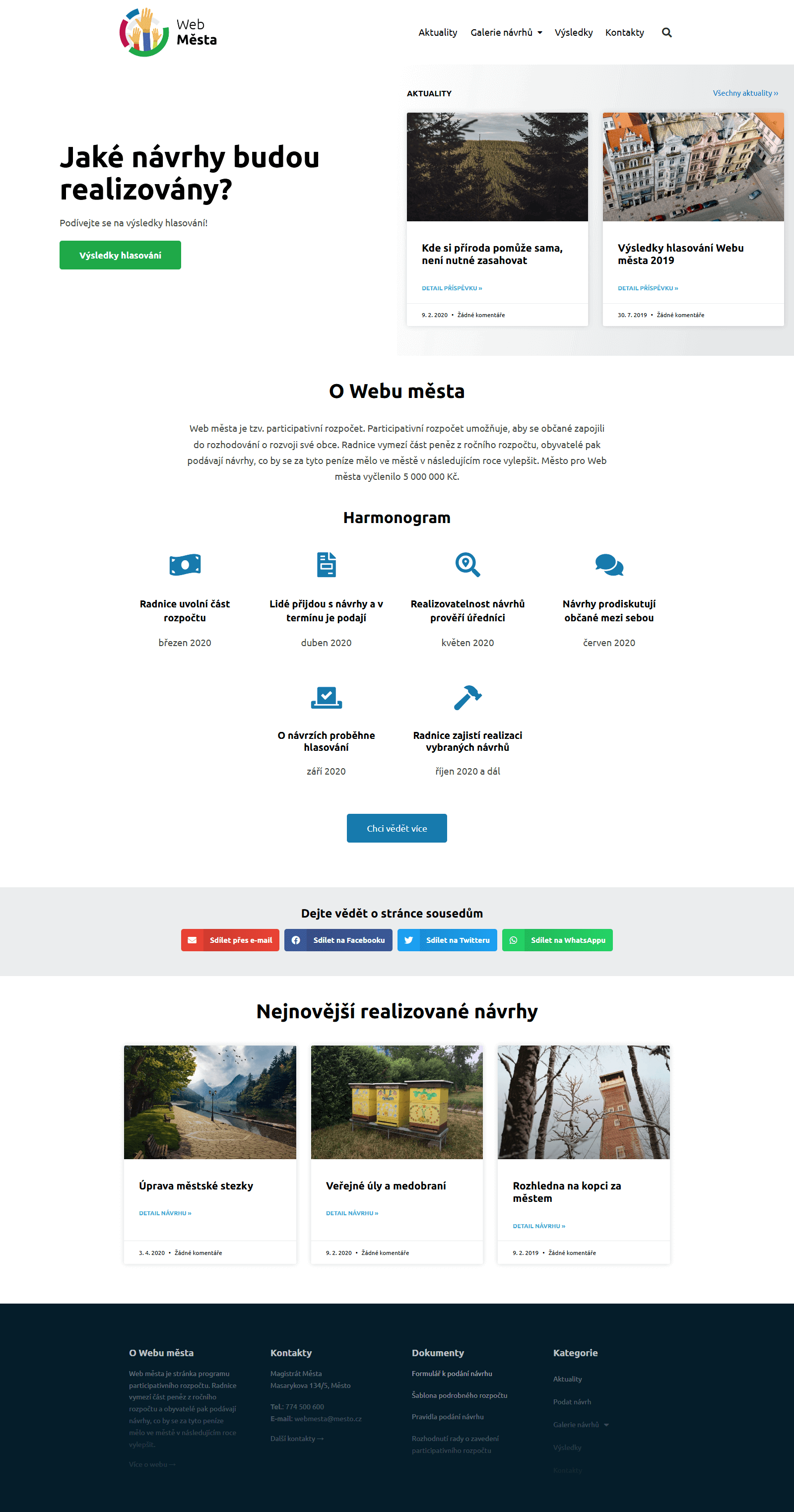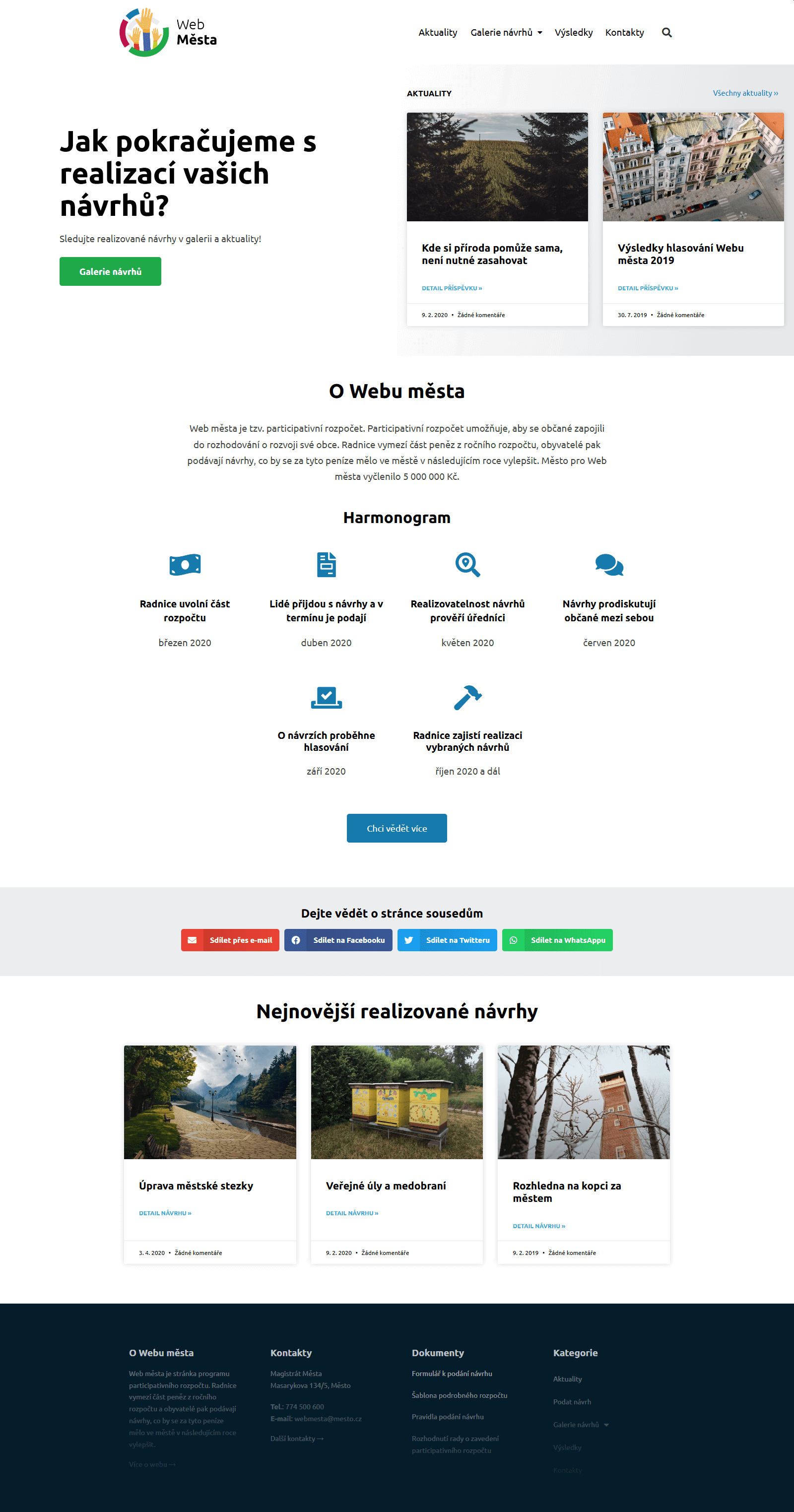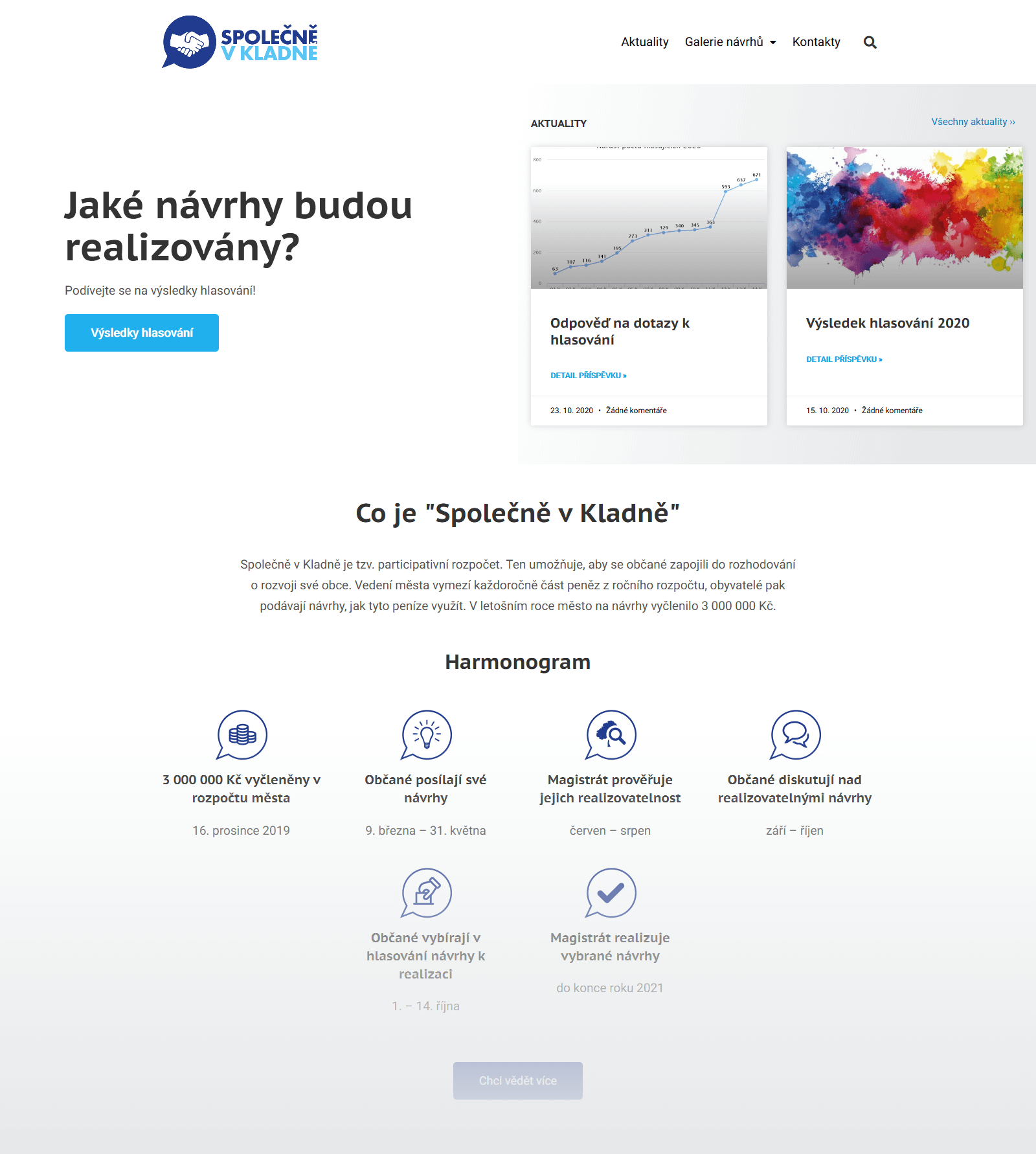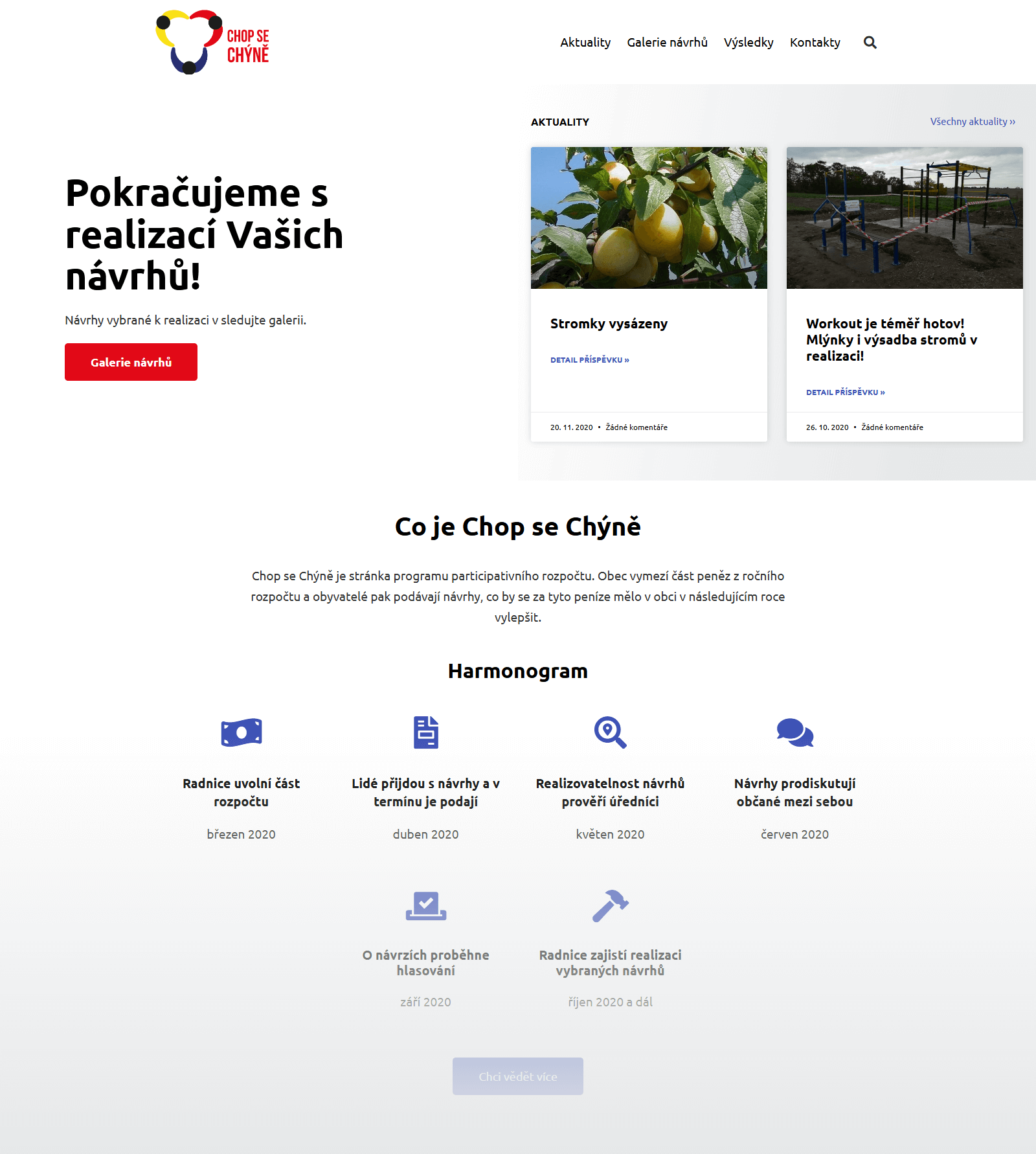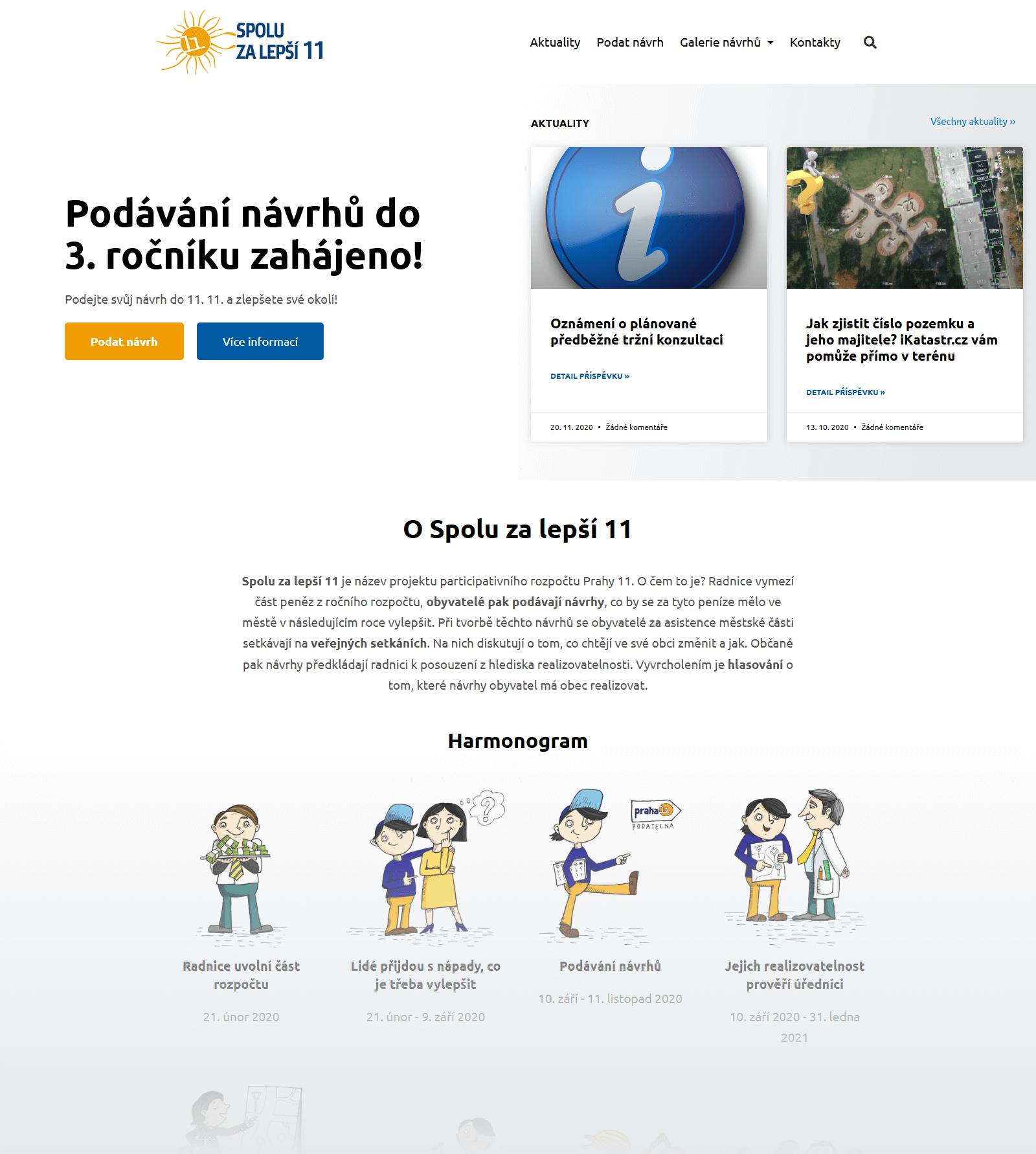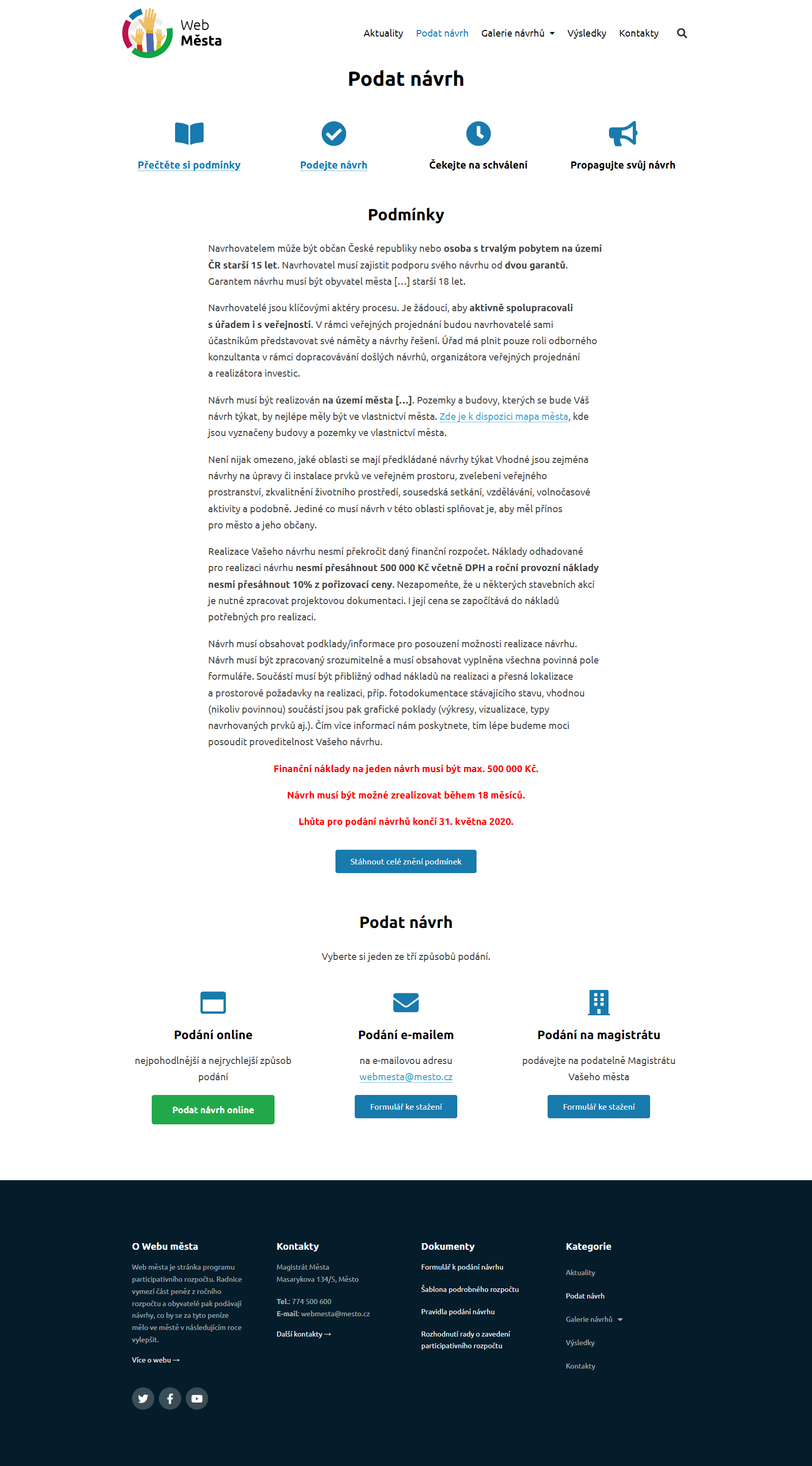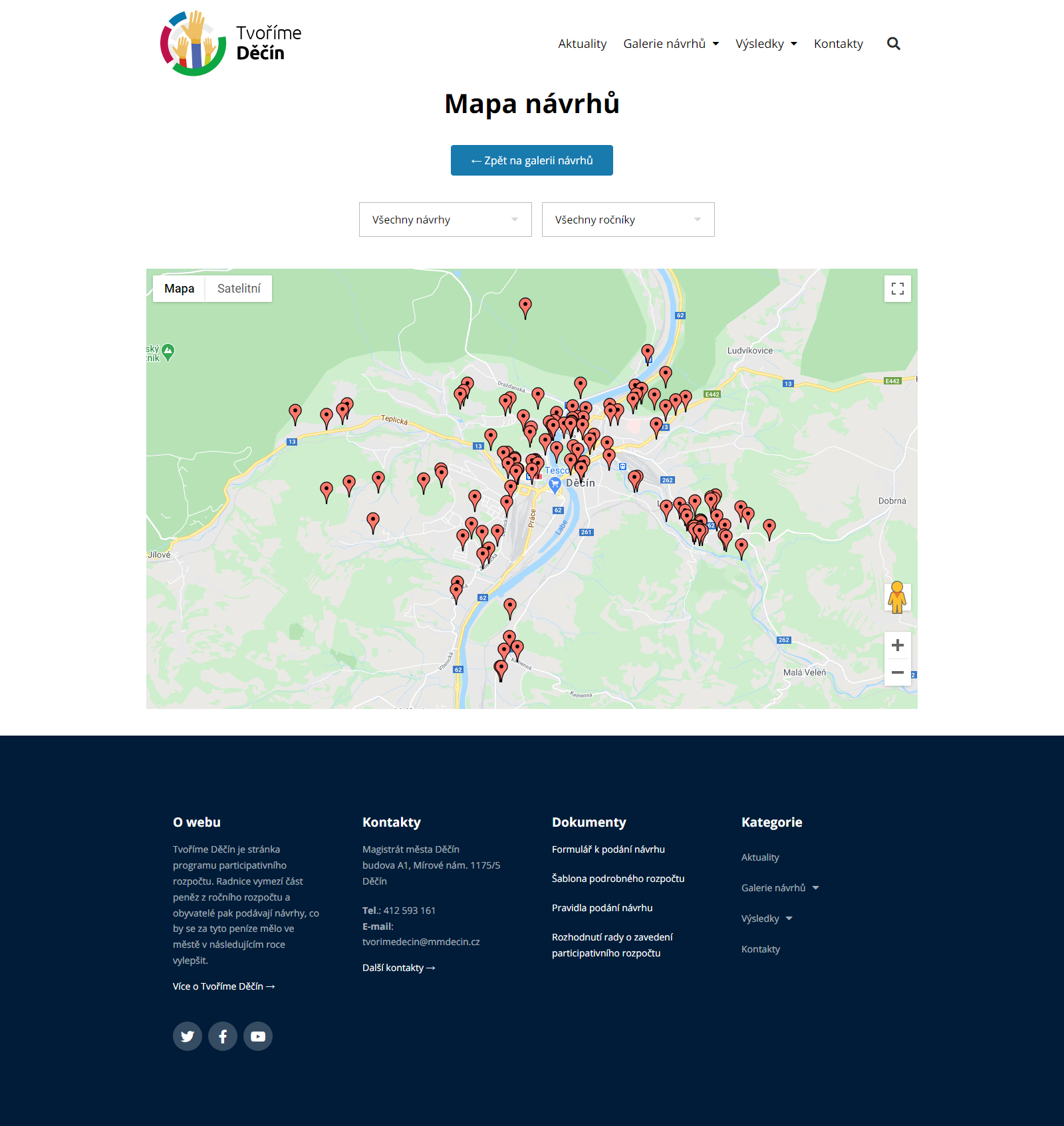In the midst of 2019 I was asked by a small Czech NGO Agora Central Europe to improve user experience and workflows of their participatory budgeting platform for mid-size cities and villages. As an online citizen participation is still more a nice-to-have than critical thing for public officials, it's impossible to ask appropriate money for web services. The main challenge of this project was therefore to deal with basic problems of the original platform with a cost-effective solution.
Initial situation
NGO Agora CE originally provided a very simple DIVI builder based web template which faced considerable technical limitations and didn't provide adequate rules for customization, administration, categorization and presentation. Lack of rules resulted in messy, unprofessionally looking websites that did not comply with the basic principles of usability and accessibility. I'm not a fan of complete redesigns, but in this case, it was more than clear that the only thing, that can stay, are the data and everything else has to be replaced with a completely new solution. The old template is still alive on this link.
What is a participatory budgeting? It's a process in which citizens come up with proposals of how to improve their city. Proposals are evaluated by experts, then a public meeting takes place and in the end, there's a public voting, where it's decided which proposals will be implemented.
Research
I made repeated in-depth interviews with participatory budgeting professionals and city coordinators to help me identify all the needs and problems. As far as citizens are concerned, I limited myself to the application of click maps and scroll maps and I made a quick analysis of Google Analytics to have at least basic information about citizens behavior on the web. Although in-depth interviews with citizens would help me to understand more about their motivations and could lead to conversion increase, I decided to postpone these interviews to a possible next phase of the project as I didn't have a capacity for another layer of project complexity.
Technical solution
With a limited time-frame in mind, I had to make a strategic decision about whether to use a website builder or not. And If yes, which one? To not continue with heavy, difficult to use DIVI builder was a no-brainer. To build the template from scratch and use Gutenberg seemed too time-consuming with respect to the amount of work I had on my shoulders. In the end, I decided to use Elementor builder since it provides good usability, at least basic design system features, great community support and operates with critical plugins such as Advanced Custom Fields or Custom Post Type UI. Website performance was and still is a big challenge, even more so because Agora uses cheap hosting. But despite many problems and limitations, I am one of those who dare to claim that this builder can be considered as a full-fledged alternative for professional usage, similarly as Webflow can be these days considered as a professional tool for brochure website development.
- WordPress + Elementor
- Custom Post Type UI
- Advanced Custom Fields
- weForms
- M charts
- TablePress
- Adminize and more
Design for all phases of participation
Participation coordinators are not web designers, nor participation specialists, so they don't need to have freedom regarding the website design and content. They long for guidance. That's why I created a preset, but editable states of homepage for all phases of participation and a guide for menu updates.
Simple customization system
It depends on the city officials how far they want to go with website customization. They can use the template as it is and only change the text in the universal template logo, or they can use their own custom logo, adapt website color scheme, use different font and even create their own website icons. Website customization usually doesn't take more than one hour.
Proposal submission remade into steps
The process of proposal submission shouldn't create unnecessary barrier and confusion for citizens. Every pixel and every word counts and can have an effect on conversion rate and quality of proposals. I therefore remade the process into clear steps and carefully reviewed all the texts and labels.
Citizen proposals: automatically generated, clearly structured
Participation coordinators can automatically generate proposal pages out of the received submissions. Citizens can comment them and individual departments of the municipality can access admin section and add their own feasibility assessments. All the proposals are categorized according to year (participation budgeting always takes place once in a year) and status.
Voting results
Agora uses its own custom-made voting system, therefore, my task was only to find a way how to process the voting results. Agora staff can now upload an Excel sheet with results in the administration and the results appear on the site in the form of sortable responsive table. Results are usually completed with voting statistics.

Easy-to-use administration
Although the website is made in a website builder most of the administration, design and content updates takes place in custom-made admin fields. Coordinator don't have to worry about the design and can fully concentrate on content.
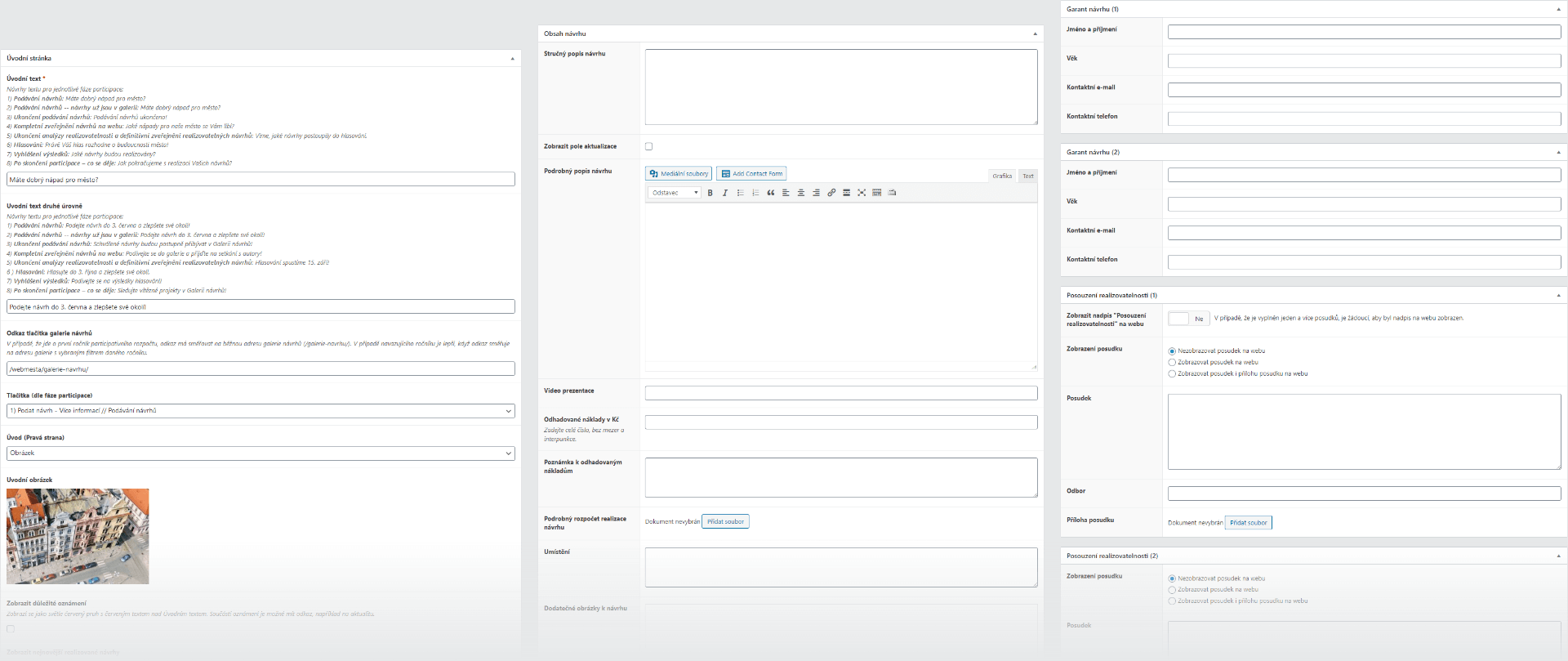
Evaluation and further development
If it's true that an author is never satisfied with the result of his effort, in case of one-man web projects, it's doubly true. Despite that, the system in general seems to be functional, makes both Agora staff and city coordinators happy and even attracted new cities in the Czech Republic as well as abroad. Since it's almost a year from launching the first website, I'm about to make a first round of formal evaluation process, which will surely discover some overlooked pain points.
Next round of the project should target citizens' engagement. The main goal would be to prepare a marketing package based on the data we've managed to gather, foreign journal articles on the topic and interviews with citizens. An obstacle could be that the success of citizen participation largely relies on minimally three aspects the designer is not able to influence 1) limited capacity of the city officials to care about marketing and PR 2) quality of participation coordinators 3) local political circumstances. And needless to say, the whole situation complicates the fact that we are experiencing an unprecedented situation of a global pandemic, which has an effect on people's relationship to public space and their attention.
